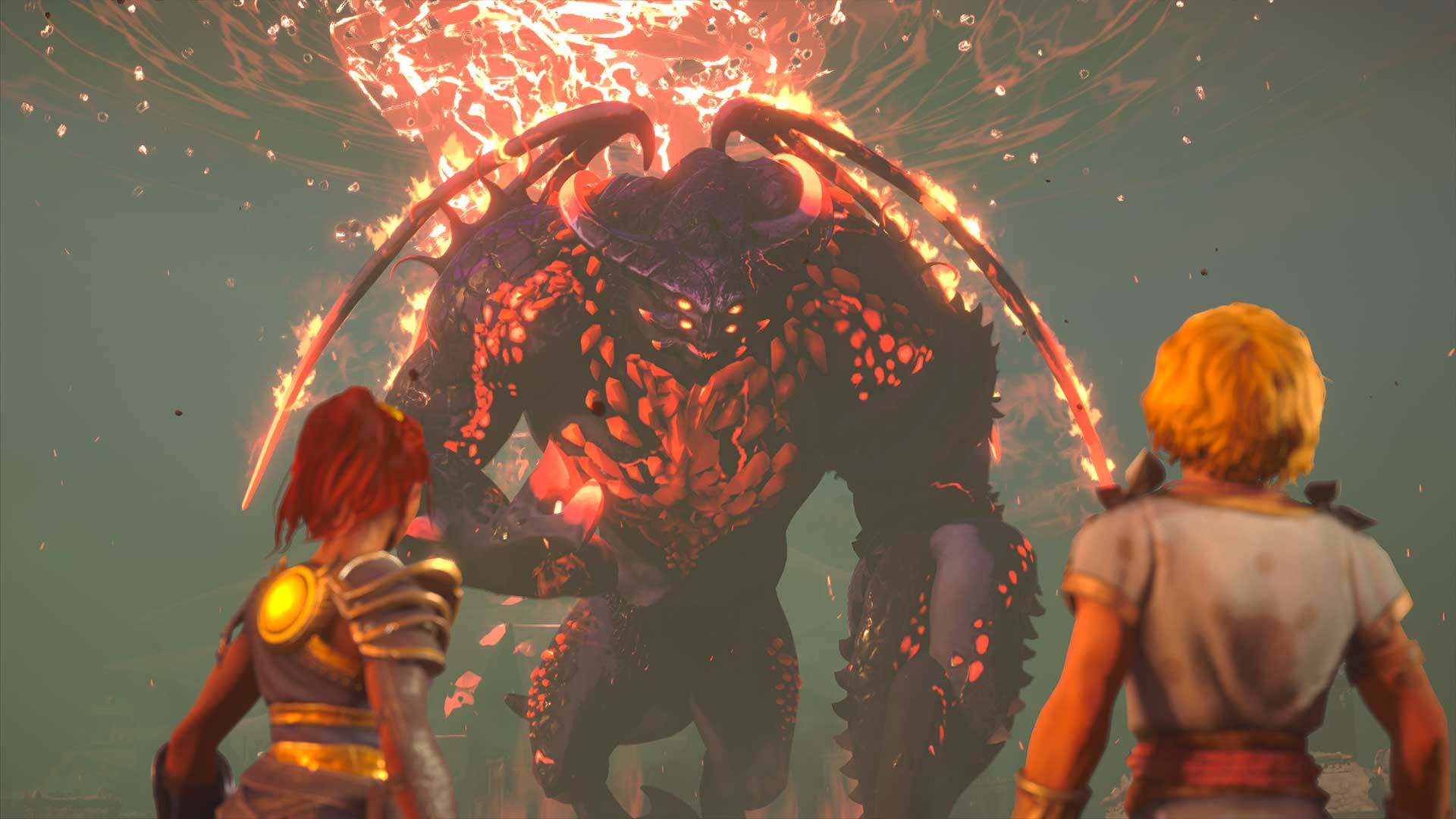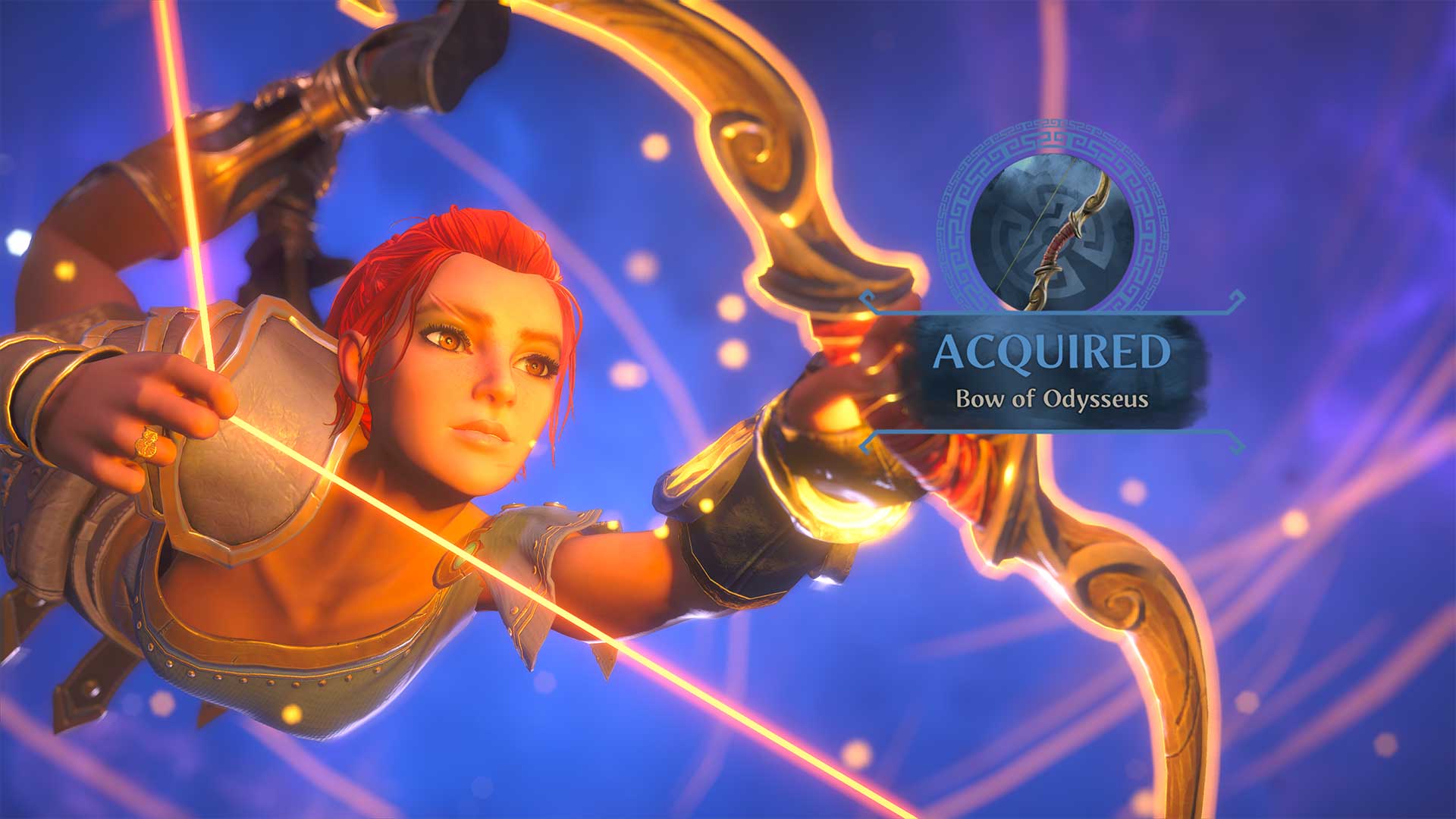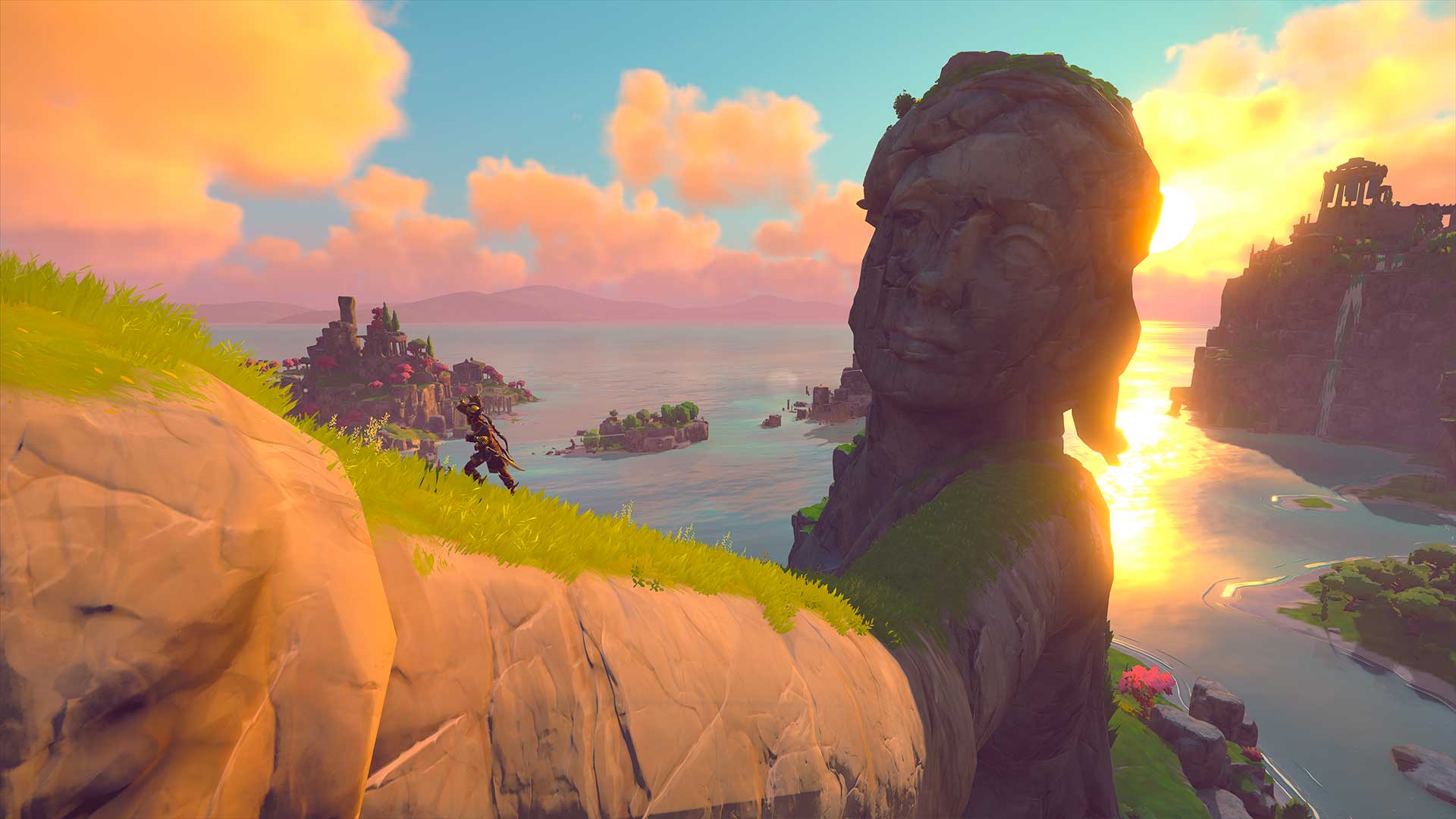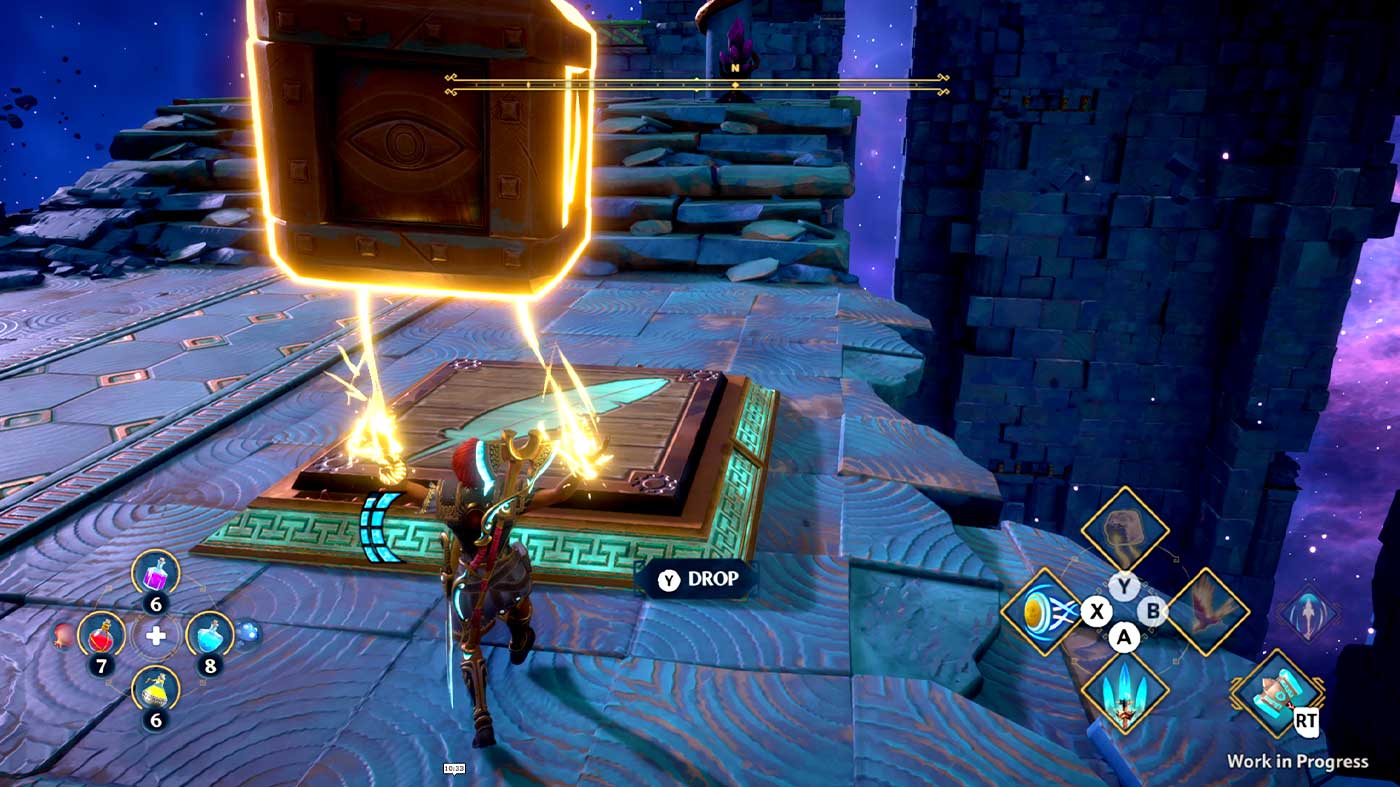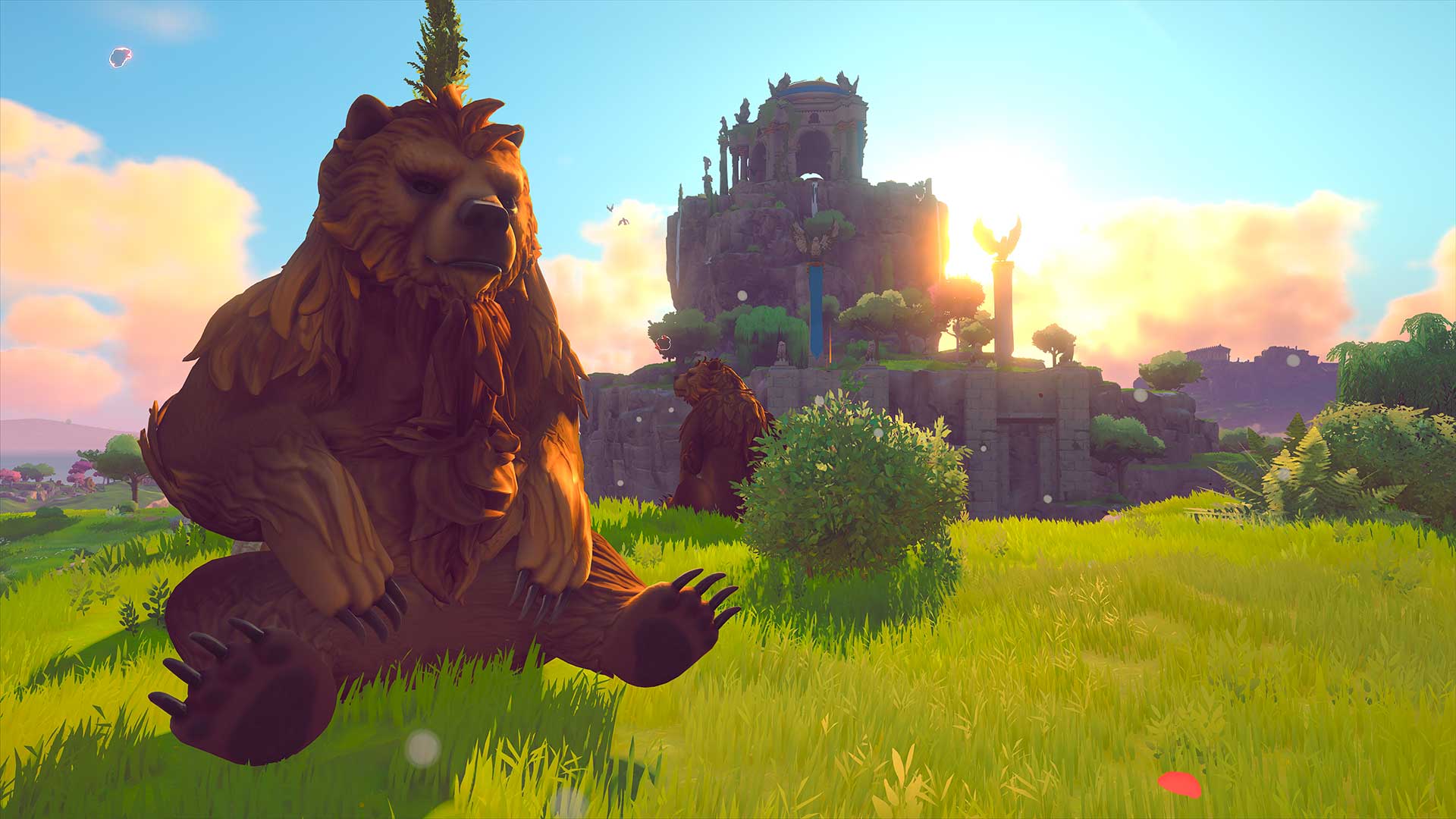When Gods and Monsters was first revealed at E3 in 2019, I was intrigued. Combining the whimsical art direction of games like Breath of the Wild with the tried-and-true story of Greek mythology, the project looked like it held promise. As the game evolved, and the project slowly transformed into Immortals Fenyx Rising, the elephant in the room grew larger and larger. The Legend of Zelda very clearly inspires Immortals Fenyx Rising, and many fans would not be wrong to have genuine concern as to whether it can live up to the name. Well, it can and does. And I’d argue in some instances even surpasses it.
Immortals Fenyx Rising follows the Greek soldier Fenyx. They’re stranded on an idyllic island named the Golden Isle following a fierce and ferocious storm. Following the loss of most of their crew, Fenyx becomes embroiled in a plot to save the Isle from the recently resurrected titan named Typhon. Typhon is moody because he was banished to Tartaros by Zeus and the other gods. Upon his seemingly accidental release, he’s managed to suppress those gods. With no other way to save their men, it’s up to Fenyx to help the gods restore themselves to their former glory and bring the full on assault to Typhon.
While Immortals comes to us from the same team as Assassin’s Creed Odyssey, the writing takes on a much more light-hearted tone. While Fenyx is their own character, the game is framed by a conversation between Prometheus and Zeus towards the end of the story. A recount, of sorts, except one in which the narrators embellish to comedic effect. It’s incredibly engaging as the game opens, with the same level of humour as you’d expect from a Disney production and some creative use of the narration to play around with what happens during Fenyx’s journey. Initially, I was skeptical about whether I could care about these done-to-death characters in this original story, but I finished Immortals with a genuine attachment to the cast and the desire to see more of them.
It’s a fun, light-hearted take on the typical Ubisoft open-world formula and one that I didn’t know I needed.
But Immortals isn’t completely typical. Wearing it’s influences on its sleeve, the game borrows heavily from The Legend of Zelda: Breath of the Wild and I’m frankly surprised it’s taken three years for one of the big publishers to capitalise on the success of Nintendo’s multi-million unit seller. But where I’d typically lambast a game for borrowing liberally from another, Immortals forges its own identity enough that I find it hard to criticise it. Instead of merely copying other games, it builds upon them to offer an experience that’s perhaps even better than its inspirations.
The structure of Immortals is predicated on most conventional open-world games. The Golden Isle is divided into separate sections. Each one is home to a god who Fenyx must carry out quests to restore them to their former glory. Each questline is comprised of a few major missions as well as a bigger dungeon-like challenge to complete too. A simple yet effective twist is that each of these questlines has a unique structure that keeps things from being rote and formulaic. While there is a little bit of a story-first design philosophy at play here, it offers a better sense of pacing, so I can’t fault it.
Fenyx has an array of weapons and abilities to assist them on their journey. The main three weapons are a sword, an axe, and a bow. Each operate how you’d expect. The sword is your main method of attacking and is easily the fastest in your loadout. The axe is slower but hits heavier and breaks through the shields of enemies. The bow and arrow is better suited to puzzle-solving, but it is great for hitting enemies in the air. It’s by no means as exhaustive as Assassin’s Creed Odyssey – you’ll only ever have these three weapons with you for the entire journey – but it makes progression and upgrades less monotonous.
While the weapon count is low at first glance, there are still many different ways to develop Fenyx meaningfully. See, you can always find extra weapons in Immortals, but they’ll have different effects that’ll either bolster your other abilities, recover health, recover stamina, or both. Even cooler, and borrowing from Assassin’s Creed Odyssey, you can pick your favourite weapon with its effects and then customise it to look like any other weapon you’ve already found.
Each of these weapons is accessible on-the-fly during combat, which is fast and snappy. Easily Ubisoft’s most responsive battle system to date, Immortals is a joy to play. Every move, every attack has a certain level of responsiveness to it, and dodges give a sense of mobility that separates Immortals from the rest. Throw in some fancy moves – including a meaty dash and a flashy area of effect attack – and you’ve got an excellent combat system. Coming off the back of Valhalla, it doesn’t have as much weight to it, but given the nimble nature of Fenyx, I’m not sure I need it to.
Odyssey took Assassin’s Creed into full-blown RPG territory, but Immortals does it’s best to balance those aspects a little bit better. Weapons themselves don’t have stats, nor does armour. Instead, you’ll use materials collected throughout the Golden Isles to improve the stats of Fenyx – whether it be damage, defense, or capacities – rather than weapons. This means that after the journey is over, you’ll have a small selection of weapons rather than hundreds of the same sword with minor stat differences. It also means if you have a favourite weapon, it’ll remain just as useful at the end of the game as the beginning because you’re just upgrading Fenyx.
The other major piece of equipment you’ll use in Immortals are the gauntlets, which have practical applications in both exploration and battle. For one, Fenyx can use them telekinetically lift objects to fling at enemies, catch their projectiles to throw back at them, and pull themselves closer to enemies. Outside of combat, Fenyx can use the gauntlets to move big blocks, spheres, and other objects to solve puzzles and activate switches. Sound familiar?
While it’s by no means an original idea, the crux of Immortals is spent inside the Rifts of Tartaros. These short, bite-sized challenges allow you to use your abilities to solve bite-sized puzzles. They’re without a doubt riffing on the shrines from Breath of the Wild, but the puzzles hidden within them are some of the best types. While incredibly simple in their design, solving every puzzle felt rewarding in Immortals. As they became more complex, I would find myself revelling in how I would solve them using abilities I’d unlocked. I’d almost feel like I was gaming the system, even though I wasn’t. But that’s what good puzzles should do.
The concept of rifts comes full circle with vaults. There’s around five of them in the game, and they’re the closest thing that Immortals have to dungeons. Each of them is built around a central gimmick, with several puzzles that escalate in complexity and difficulty. There are no items to be found, but there’s usually a big boss to fight at the end. Each of the bosses is just larger, more capable versions of the enemies you’ll encounter on the Golden Isle, but it feels a bit bigger budget by just having them than having nothing at all. Do the vaults stand-in for the classic Zelda dungeon? Not quite. But they’re pretty damn close.
In terms of extracurricular activities, this is perhaps where Immortals best capitalises on Ubisoft’s experience with open world games. Outside of the mainline quests, you’ll be able to find other items and solve all different kinds of puzzles to unlock materials to upgrade Fenyx. The team could’ve easily filled the map with an excessive amount of busy work but instead what’s here feels approachable and manageable and never feels bloated. Most players will be able to get through the story in around twenty or so hours, but there’s easily enough satisfying content here to double that. There’s even a New Game+ mode too.
While not quite reaching for the stars with photorealism, Immortals Fenyx Rising is one great looking game. The Golden Isles is one of the most idyllic looking locations I’ve had the joy of exploring thus far on the new generation of consoles. The lighting is quite simply breathtaking, and the game is one of the most colourful and vibrant I’ve played in years. Experiencing them on the new consoles is similarly a treat, running at a rock-solid 60 frames per second. Maybe it’s more reflective of my tastes, but it’s refreshing to play a game that looks so colourful, fresh, and vibrant. If 60 frames isn’t your thing, you can choose Quality mode instead.
On the other side of the presentation, the score is similarly refreshing, offering the perfect backdrop to your odyssey through the Golden Isle. The voice work is excellent, if not a bit spotty at times, and sometimes even leans a little bit too much into the camp. Still, given the Disney-esque vibes the game is leaning into, it oddly fits. It’s an authentic as ever representation of Ancient Greece in which perfect presentation only helps to nail the delivery.
It’s a fantastic romp through a great Greek fantasy and one you’ll want to keep exploring long after the credits have rolled.
THE XBOX SERIES X VERSION OF THIS GAME WAS TESTED FOR THE PURPOSE OF THIS REVIEW. A DIGITAL REVIEW CODE WAS PROVIDED BY THE PUBLISHER. WE LOVE BRINGING YOU THE BEST GAMING AND TECH BARGAINS. WE MAY GET A SMALL PERCENTAGE OF THE SALE THROUGH AFFILIATE PARTNERSHIPS



